SPL Lighting Switches and sockets

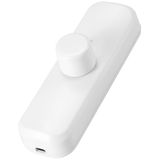
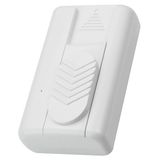
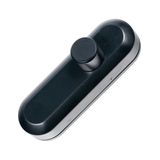
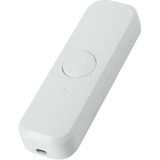
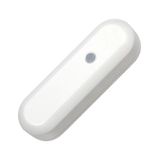





spl lighting switches and sockets — ranges and build
SPL’s catalogue covers flush and surface families built on Euro back-box geometry (60 mm box, 60/71 mm screw centres). Mechanisms are modular: 1–4 gang plates, 1-way/2-way/intermediate switching, momentary (bell), and indicator options. Materials are high-impact, UV-stabilised PC/ABS with metal subframes on pro lines for tighter tolerances. Current and voltage ratings align to 250 V AC; switches are typically 10AX/16AX for mixed resistive/inductive loads, with 20AX heavy-duty variants for fans and small motors. Faceplates arrive in satin white, anthracite, brushed aluminium, and glass; edges are micro-radius to sit flush against painted walls without shadow lines.
spl lighting wall switches — mechanisms and load ratings
Mechanisms use snap-in cartridges with silver-alloy contacts and arc-chutes on higher AX frames to limit contact erosion. Toggle, rocker, and flat-plate paddles share the same carrier; locator LEDs and neon indicators are available on select models. For LED loads, trailing-edge dimmer inserts (5–200 W LED typical) provide soft-start, min-level trim, and thermal foldback; rotary or push-dim versions fit the same aperture. Momentary “retractive” inserts interface cleanly with relay packs and scene controllers when a simple wall control is preferred over a wall station. Back-pressure springs are tuned so multi-gang plates feel consistent even when circuits differ.
spl lighting plug sockets — standards and options
Outlet modules cover Type F (Schuko) with earthing clips, Type E/F hybrid for French/Belgian pins, and Type G where required. Contact sleeves use nickel-plated brass; shutters and child-protection sliders are available on public-area sets. USB combos offer 2× USB-A (2.4 A shared), A+C (up to 18–30 W USB-C PD depending on series), or C-only high-power variants—each with thermal/current protection and low standby draw (< 0.1 W typical). For damp rooms and housekeeping zones, gasket frames lift the face to IP44 when used with matching boxes; splash covers are available for utility areas.
spl lighting modular wiring devices — frames, modules, finishes
The modular grid accepts switch, dimmer, outlet, data/AV, and blanking inserts behind 1–4 gang frames so a room can mix functions without finish drift. Multi-module horizontal frames share a hidden joiner to keep grout-line symmetry across tiles or stone. Trim depths include slim (≈ 7–9 mm proud) for modern interiors and classic bevel for hospitality. Fixing claws and captive screws ship in the kit; anti-rotation nibs on the carrier stop plate walk-off during use. Matching blind plates, key-switches (maintained or momentary), and indicator windows round out the range.
Protection, IP, and impact behaviour
Interior lines are IP20 by default; add-on gaskets and sealed rockers create IP44 sets for bathrooms (zone-appropriate). Faceplates meet IK06–IK08 impact ratings depending on finish; metal trims include insulating backers to maintain creepage/clearance to live parts. Heat-resistant bases support derated loads in warm risers; published power-loss figures guide spacing in clustered banks.
Termination and back-box geometry
Terminals accept 1.5…2.5 mm² Cu (2× conductors per pole on selected sockets for ring finals). Spring-cage versions speed install with ferruled fine-strand; screw clamps provide higher pull-out on mixed solid/stranded. Depth: ~22–26 mm for basic switches, ~28–32 mm for dimmer/USB modules—use 40 mm boxes for dense combinations. Captive terminal shutters reduce whisker risk during insulation resistance testing.
USB power and smart extras
USB modules use synchronous rectification and wide-range inputs; C-ports negotiate PD profiles with over-temp foldback. Smart add-ons (where offered) expose relay/dimmer status to a gateway via dry-contact or low-voltage bus; keep SELV segregation in mixed plates and route control pairs in separate conduit. Standby power and EMC are sized for residential/commercial limits so neighbouring AV and metering remain quiet.
Compliance engineers expect
Switches: EN/IEC 60669-1 (and -2-1 for electronic switches/dimmers). Socket-outlets: EN/IEC 60884-1. USB power units: safety to EN/IEC 62368-1; EMC to EN 55015/EN 61000-6-1/-6-3; mains quality EN 61000-3-2/-3. Glow-wire on plastics typically 650–850 °C per IEC 60695-2-11/-12. Clear laser-etched marking indicates rating, terminal scheme, and tightening torque.
Series snapshots installers actually use
- Core White: 10AX/16AX rockers, 1–4 gang, Schuko/hybrid sockets, USB-A/C options; the day-to-day backbone for apartments, offices, and hotels.
- Metal Line: brushed aluminium and stainless trims on metal subframes; higher IK, matching key-switches and indicator windows for corridors and plant.
- Glass Edge: low-profile tempered-glass faces, rotary/push dimmers, and paired Type F outlets for front-of-house.
- Utility IP44: gasketed frames, cover flaps, and anti-slip rockers for housekeeping, back-of-house, and wash-adjacent positions.
Notes on outlets, switching, and accessories
Mixed walls often pair USB combos with standard receptacles; label the circuit where permanent loads (appliances) share a plate with electronics. High-inductive points (fans) belong on 16/20AX mechanisms—this is where spl lighting power switches show their advantage over 10AX in service life. For tender lines that simply call up spl lighting electrical outlets, specify type (F/E-F/G), shutter requirement, and any USB power budget (e.g., “A+C 30 W PD”) on the same row to keep procurement clean.
Installation detail that saves re-work
Keep plate alignment by referencing the frame’s datum to the finished surface, not the box lip. For tiled walls, use the multi-module joiner and a 2 mm spacer pack so grout lines pass through symmetrically. In multi-gang mixes with USB and dimming, choose 40–60 mm boxes to avoid conductor pinch; bend radii on 2.5 mm² ring finals require the depth. Earth continuity tabs on metal frames bond via the fixing screw—verify continuity during FAT.
Durability and service parts
Contact plating and cam profiles are designed for > 40–80 k operations on mechanical switches; dimmer inserts include replaceable fuses where specified. Keep a drawer of rockers, frames, and USB modules as spl lighting installation accessories for late swaps; colour batches are controlled across series so replacements don’t drift. Indicator windows and legends are available for key circuits (maid, do-not-disturb, housekeeping, HVAC isolate).
Applications by room type
- Guestroom/back-of-house: Core White with E/F hybrid outlets and A+C USB; 10AX/16AX switches, IP44 for bathrooms.
- Retail and front-of-house: Glass Edge on visible walls; dimmers feeding accent circuits; USB-C PD near cashwraps.
- Healthcare/education: Metal Line with enhanced IK; clear legends; gasket frames for wet cleaning.
- Plant/utility: Utility IP44 with flaps and high-grip rockers; 20AX mechanisms for fans and contactor coils.
Kitting and ordering cues
Order per plate as: frame finish + module set (e.g., 2× rocker + 1× USB-C PD) + box depth note. For sockets: type, shutter Y/N, USB spec if present. For dimmers: trailing-edge, min-level trim, W (LED) channel capacity. Where a schedule groups the family as spl lighting switches and sockets, include terminal scheme diagrams and torque windows with the submittal so panel shops and site crews wire once.